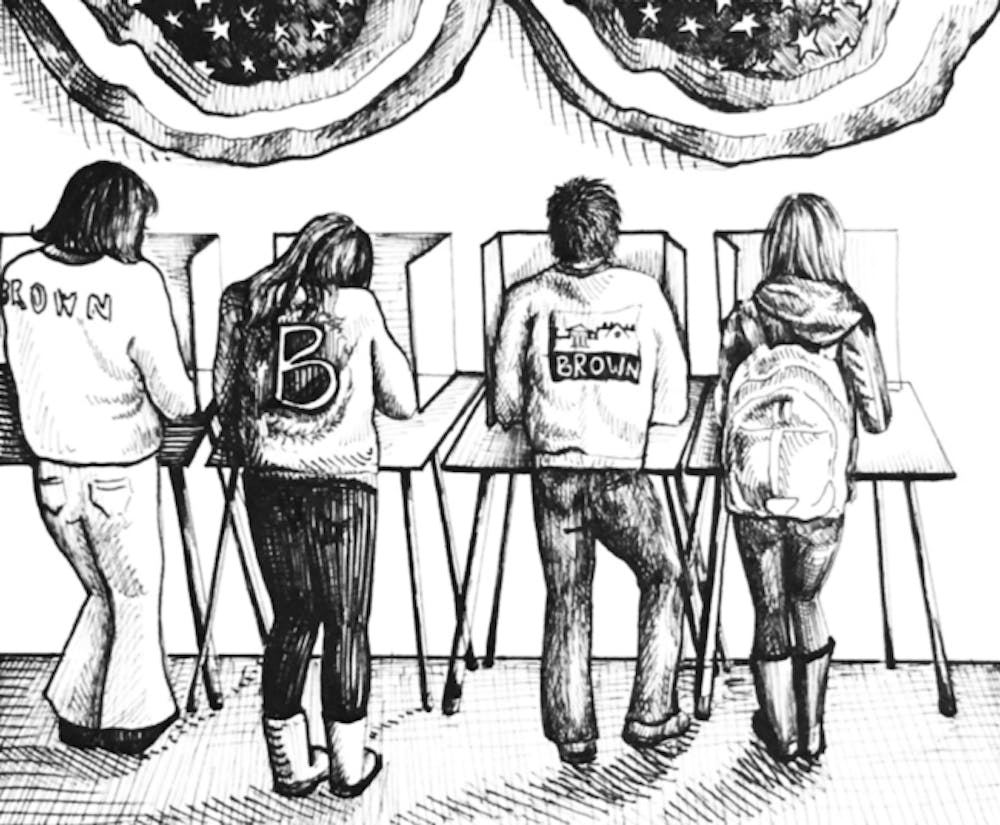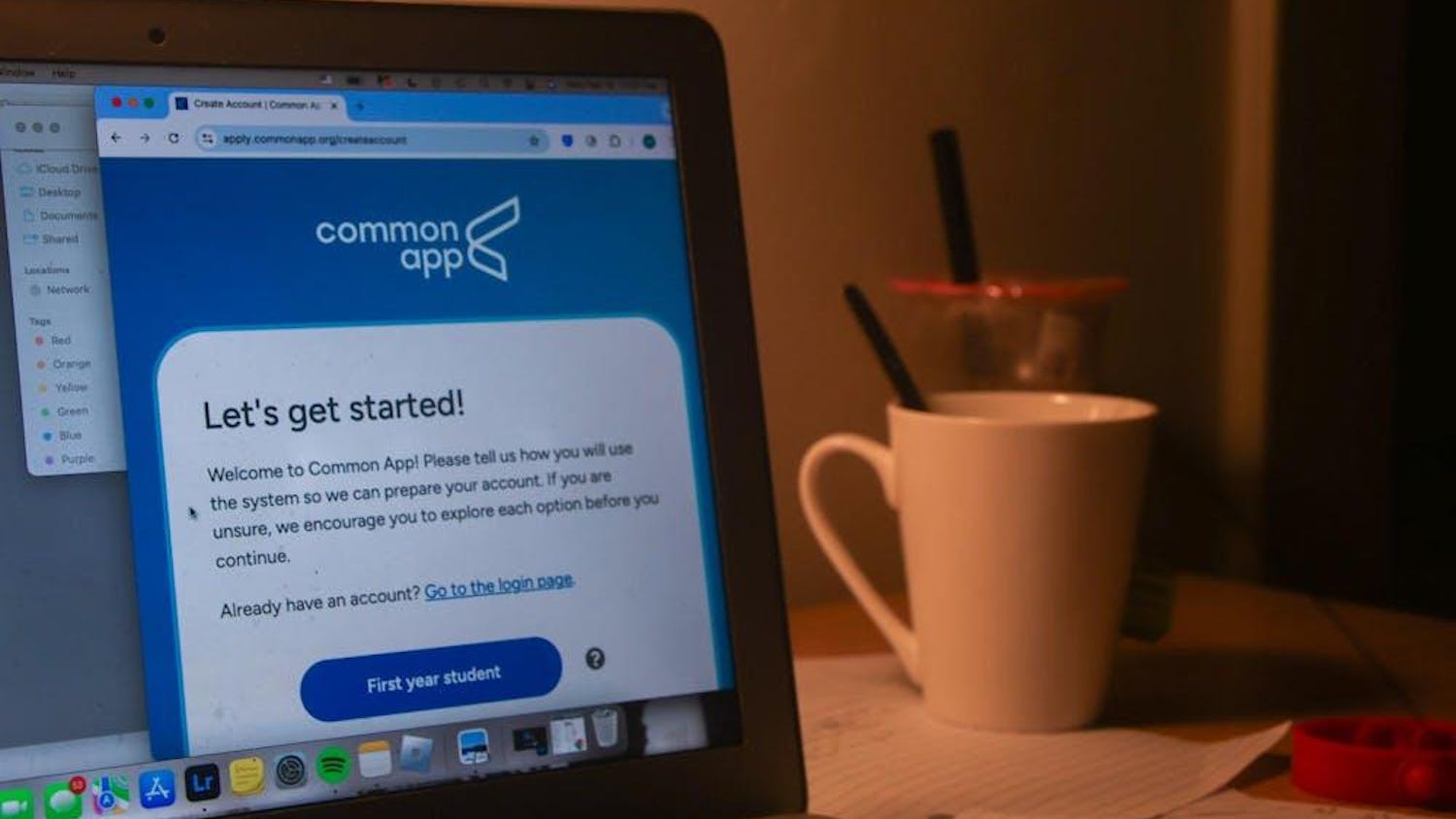This year, the University hosted a voter registration and civic engagement initiative called the ALL IN Challenge, which encouraged absentee and in-state registration with an ultimate focus on turnout and was supported by the Swearer Center for Public Service. It sought to double student voter turnout from the previous midterm election to at least 26 percent, The Herald previously reported. 65.7 percent of eligible undergraduates polled self-reported voting to The Herald.
The ALL IN Challenge made use of the Democracy Works online tool TurboVote to register students to vote. Students can use the site to register, request an absentee ballot or simply receive election reminders. “We see ourselves as your lifelong voting concierge,” said Democracy Works Director of Communications Brandon Naylor. TurboVote redirected students who requested registration help “to their state online voter registration site or … got them a pre-filled out paper voter registration form that they can mail in themselves,” said Democracy Works Senior Partnerships Associate Sara Clark.
“For Brown, 701 students in all 2018 signed up for TurboVote,” Clark said. “Of those 701 students, 402 used the site to request registration assistance.” Democracy Works calculated this as roughly 10 percent of Brown undergraduates who had not already signed up. “Ten percent is nothing to cough at, and 700 signups is really good for 2018,” she added.
Peer school best practices
In January 2018 Democracy Works established the “pretty ambitious” target of signing up 100,000 students through all of its “over 130 partners,” which they achieved and surpassed in mid-October. Clark described this as “a huge success, something that we’re really proud of, especially in a midterm election year.”
The University of Michigan had the highest number of signups through TurboVote this year at 12,000 signups, she said, while the University of Chicago had the highest in terms of percentage, at over 80 percent of the undergraduate student body.
Multiple factors appear to have contributed to UChicago’s high turnout. “It’s really been impressive seeing the level of engagement from their faculty and administration, to the Institute of Politics on campus, all the way down to the students who basically ran their own sort of registration campaign, UChiVotes,” Naylor said.
But a single strategy may go a long way toward explaining UChicago’s success and offer a guide for other schools. PeopleSoft, UChicago’s equivalent of Brown’s Banner, required students to fill out voter registration as an item on a checklist of prerequisites for class registration, along with standard items such as emergency contact information. UChicago is one of only three schools to have implemented this practice; the other two are Hobart and William Smith Colleges and Harvard, she added.
“It is incredible, because it institutionalizes voter engagement, and each year, they get thousands signing up through that one totally hands-off, really easy implementation strategy,” Clark said.
There is still room to increase engagement through voting at Brown, according to Assistant Dean of the College and Swearer Center Director of Student Development Betsy Shimberg . “Aren’t we supposed to be the activist Ivy? Shouldn’t we have more eligible students who are actually participating in voting? So, I’d like to see those numbers higher,” she said.
In general, “schools are waking up a little bit to their responsibility in promoting democracy in the United States,” said Director of Impact at the Tufts Institute for Democracy and Higher Education Adam Gismondi.
While schools previously have focused on temporary measures such as tabling, which remain “essential,” there is a shift toward “long-term infrastructure” to sustain civic engagement, he said. This shift is visible from the top down and the student body up.
Some senior administrators are allocating more resources to voter registration efforts, and building personal relationships with election officials. When election officials are recognizable presences on campuses, they can clarify regulations, Gismondi explained.
This removes barriers for absentee and in-state student voters alike. In October, Rhode Island Secretary of State Nellie Gorbea led a workshop about voting at Brown, The Herald previously reported.
Other strategies across institutions of higher education for increasing civic engagement include dialogue and faculty from all fields discussing the “public relevance” of issues involved in their work, Gismondi said. Schools have also reported using “granular data” from the National Study of Learning, Voting and Engagement, which breaks down voting patterns according to categories such as race, ethnicity, gender, age and major “to think about the specific issue of equity and representation in government,” he said.
Absentee voting and impact on turnout
Of the 73.7 percent of students who reported they were registered to vote in the midterms in The Herald’s Fall 2018 poll, the overwhelming majority registered to vote absentee rather than in-state. The poll found that only 9.7 percent of students are registered to vote in Rhode Island, while 64 percent of respondents are registered to vote outside the state. The high number of absentee voters at the University has implications for voter registration initiatives.
In a presidential election, Rhode Island residents — including Brown students — are allowed to register to vote the same day as the election. On the day of the general election, “we see voter registration from Brown students in Rhode Island spike,” Shimberg said. But students voting in the midterm elections have to meet registration deadlines months ahead of election day, she said. This year, University students had an Oct. 7 deadline to register to vote in the midterms in Rhode Island.
“When institutions start to push voter engagement around the end of October, they’ve already missed the bus, because most students had to have their absentee ballot information in well ahead of that,” she said.
In fact, absentee voting regulations can mean de facto “disenfranchisement” for some students, Shimberg said. Michigan requires first-time voters to vote in person; Minnesota calls for another Minnesotan to “witness” an absentee ballot.
Deadlines and requirements for voter registration across states can complicate the process of registering to vote for young people whether they vote in-state or absentee, Shimberg said. The Swearer Center has worked to publicize and clarify the nuts and bolts of the process in different states. Efforts sought both to increase registration and close gaps between registration and turnout.
The Swearer Center worked to circumvent logistical barriers to voting absentee by offering “stamps, envelopes, a notary” for validating ballots. Shimberg even had “a Minnesotan on standby,” she said.
Engagement beyond the vote
Voting data is not necessarily the most comprehensive measure of civic engagement on a campus, Gismondi said.
“Some schools would argue that the amount of resources they put in are an indicator of how civically engaged they are, but the reality is that not every school has the same amount of resources,” Gismondi said. In addition, the population of an institution can skew evaluations of the success of its voting efforts, because a less diverse institution that might serve a more wealthy and white population — demographic factors that research has shown are linked to high voter participation — is more likely to report high student turnout.
Shimberg has seen an increase in civic engagement among young people at Brown in the two years since the election of President Trump. But voting is merely the “tip of the iceberg” of civic engagement, she said.
Shimberg remains “much more interested in encouraging students to have deliberate conversations about democracy, and in exploring: What is Brown’s role? What is higher education’s role in defending our democracy?” Other “beneficial” forms of civic engagement include conversing with someone who disagrees with you and calling your representatives, she said.
Students should also consider joining University committees such as the University Finance Board or the Public Safety Board, she added. “That’s a chance for you to be a part of a democracy,” she said.
It is essential to maintain high levels of student civic engagement, Shimberg said. “It can’t be a reactive thing” that disappears in the wake of an election, she said.
The Swearer Center continues a Beyond the Ballot campaign which encourages engagement beyond voting and elections. Shimberg described the campaign as “an integrated effort around defending democracy, and higher education democratic practices.” The campaign has run conferences, partnered with other campuses and holds monthly dinners on campus, she said.
Voting is “something that we latch onto because it’s easy to report, and you know about the data, and everybody wears a sticker. But there are lots of other ways that we want people to be civically engaged, and I think Brown students are civically engaged, in Rhode Island, even if they’re not voting” here, Shimberg said.





